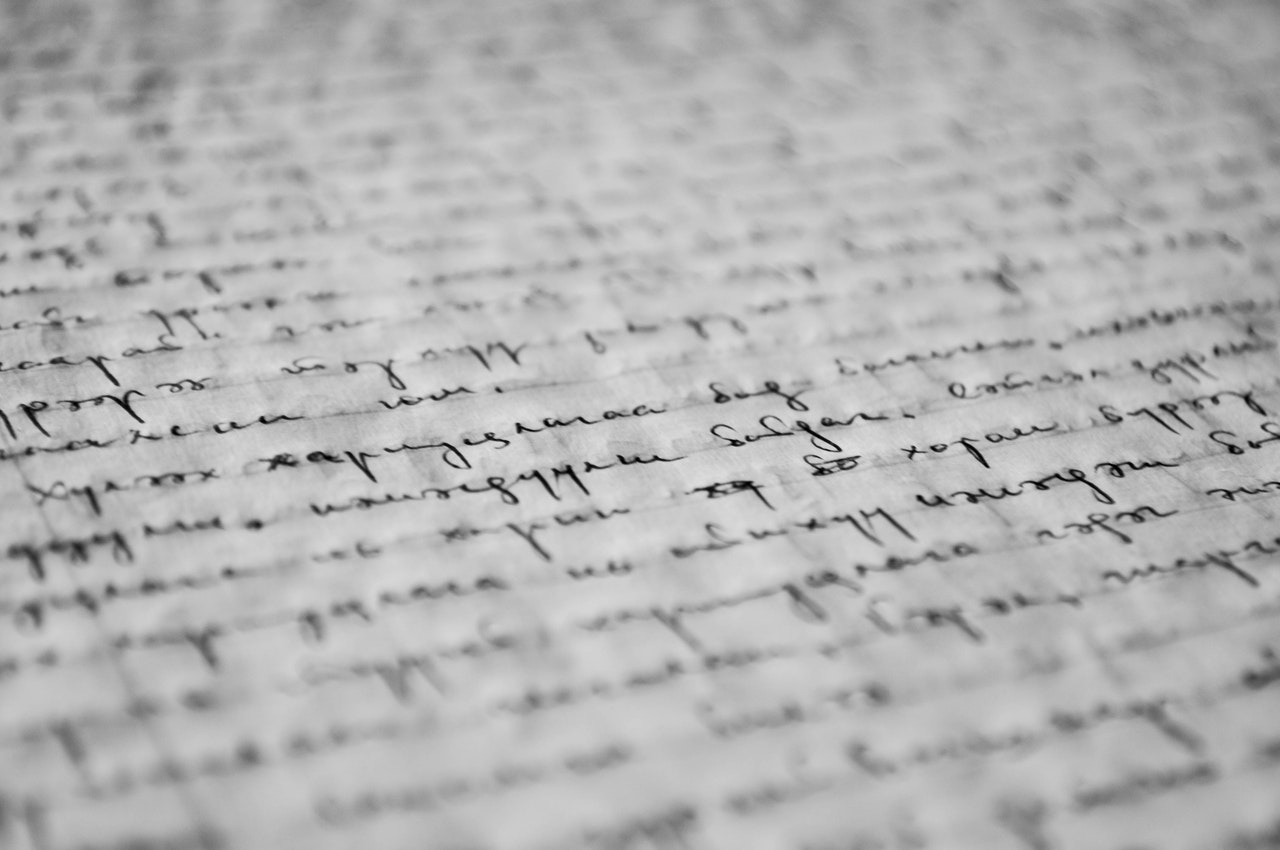Understanding the Meaning of Literacy and Its Types, Also Learn Easy Tips to Improve It
Literacy is often a topic of discussion in newspapers and forums. So, what is the true meaning of literacy?

Kapanlagi.com - Understanding narrative texts are also known as narrative texts. Because narrative texts are narrative, which means explaining an event or incident based on chronological order. So do you already know what narrative texts are, their structure, characteristics, types, and even examples of their use?
In a narrative text, there are characters, plot, and the chronology of an event or incident. Narrative texts generally aim to entertain readers, increase knowledge, or simply provide information that is presented in narrative text.
Meanwhile, narrative texts also have conflicts that can take the form of fiction or non-fiction works. Narrative texts also have structures, characteristics, and types that need to be known. That is why below there is a complete understanding of narrative texts with other explanations.
The understanding of narrative texts, structure, characteristics, types, complete with examples can be found through the review below. Here is the understanding of narrative texts that has been summarized by kapanlagi.com from various sources.

Definition of Narrative Text in KBBI (credit: pexels.com)
Based on its content, in the Indonesian language, there are several types of text. One of them is narrative text which contains information in the form of the chronology of an event. You may be familiar with narrative text. So, do you know what narrative text is?
Understanding the definition of narrative text is important for you to know. This is because narrative text often appears in various works of fiction and non-fiction. Especially for those of you who are studying and learning the types of text in the Indonesian language, it is necessary to know what narrative text is.
The definition of narrative text, according to the Indonesian Dictionary (KKBI), explains that the text is narrative in nature. The meaning of narrative text can also be explained by describing or explaining in a composition. Secondly, the meaning of narrative text in KBBI can also mean prose whose subject is a series of events.
The purpose of narrative text is also to entertain readers. That is why the structure of narrative text often uses narrative language. The meaning of narrative text is to describe information in the form of the chronology of an event or incident based on the sequence of time. Meanwhile, the definition of narrative text is also known as narrative text. So, you no longer need to be confused in searching for an explanation of narrative text or narrative text, both of which can be considered as a unity. That is the understanding of narrative text that you need to know.

Types of Narrative Text (credit: pexels.com)
Narrative texts can be based on real events or pure fiction. That's why there are various types of narrative texts that are commonly known. Among the examples of narrative texts are novels, short stories, and inspirational stories. So, what are the types of narrative texts? To understand the explanation of the types of narrative texts, here is the review that you need to know. The types of narrative texts are as follows.
1. Informative Narrative Text: Informative narrative texts are texts that aim to convey information about a specific event or incident. This is in accordance with its type, namely informative narrative.
2. Sugestive Narrative Text: Sugestive narrative texts explain an event or incident that contains a hidden meaning for the reader.
3. Artistic Narrative Text: Artistic narrative texts are texts that tell about events or incidents with the aim of providing aesthetic experience to the reader. This means that narrative texts can be presented in the form of fiction or non-fiction writing using language that is usually in the form of metaphor.
4. Expository Narrative Text: Expository narrative texts are texts that aim to provide accurate information about a specific event or incident. In addition, its purpose is to increase the knowledge and insight of the reader. That's why expository narrative texts include data that is truly valid, real stories or non-fiction, and more detailed information.
Those are the important types of narrative texts that you should also know. So that you guys know what types of narrative texts or narrative texts there are.

Characteristics of Narrative Texts (credit: pexels.com)
There are several important characteristics of narrative text that you should know. The following characteristics of narrative text will help you recognize narrative text in a composition. You can read the explanation of the characteristics of narrative text below.
- Uses narrative language style, which tells a story or event.
- Has a clear plot from the beginning to the end of the story.
- Contains conflicts in a certain event or incident.
- Consists of several important elements in the story, such as theme, setting, plot, characters, or point of view.
- Includes characters with their own traits.
- Has a timeline, place, and situation.
Those are some characteristics of narrative text that will help you recognize it in a piece of writing. The above characteristics of narrative text can be used as a reference to better understand narrative text.

Narrative Text Structure (credit: pexels.com)
In addition, there are several structures of narrative texts that also need to be known. The structure of narrative texts explains how the text is constructed. The following are the structures of narrative texts that need to be known.
1. Orientation: In this structure of narrative texts, a narrator or writer explains about the time, place, characters, and what is happening.
2. Complication: In this structure of narrative texts, it explains in detail the events or incidents. Whether it is the trigger, cause, effect, or the presence of a specific conflict.
3. Resolution: In this structure of narrative texts, it contains a conflict with a story that is decreasing. This means that the conflict can be resolved.
4. Reorientation: In this structure of narrative texts, it contains a moral message in a story or narrative. This structure also becomes the end part of a story or event, although this structure may not be owned by a narrative text. It means that it is optional for a narrator or writer.

Arrangement of Narrative Text (credit: pexels.com)
After understanding the explanation of the definition of narrative text, types of narrative text, characteristics, and structure. Surely wondering how to use and organize narrative text? That's why here are some important points about the use and organization of narrative text.
- Determine the theme to be written and conveyed to the readers.
- Choose the target audience for the narrative text you are going to create.
- Arrange the main event design based on its flow, whether it's from the beginning to the end.
- Arrange the sequence of events into the opening, development, and ending of the story to be conveyed.
- Provide more details about the main event to be conveyed to the readers. Explain in detail about the event as supporting material.
- Create an organizational scheme starting from characters, traits, plot, setting, and point of view.
- Pay attention to punctuation marks in sentences to create narrative text.

Example Narrative Text (credit: pexels.com)
In writing narrative texts, a writer certainly needs to pay attention to various important things as explained in the previous review. To make it easier for you to understand the meaning of narrative text, here is an example of narrative text that needs to be known. The following example of narrative text is a short and easy-to-understand example. Let's take a look at the reference on the following example of narrative text.
Last night, Ben came home late. His house door was already locked. Worry began to envelop his heart when he heard a strange voice in the middle of the night. His mind tried to remain calm while trying to open the house door in a hurry. His hands were still trembling. He thought of shouting. However, that fear began to fade when he found out that it was his father looking for Moli, Ben's cat.
That is the explanation of the meaning of narrative text, its characteristics, types, and structure. In addition, by looking at the example of narrative text, it can make it easier for you to understand the meaning of narrative text.
Sources: Bola.com, penerbitdeepublish.com, and other sources
(kpl/gen/nlw)
Cobain For You Page (FYP) Yang kamu suka ada di sini,
lihat isinya
Literacy is often a topic of discussion in newspapers and forums. So, what is the true meaning of literacy?
By knowing how to transfer virtual Mandiri accounts, you will get a more efficient transaction process. With this, the transaction style of the community will shift towards something easier than regular accounts.
Checking IM3 credit can be done easily and quickly. In less than five minutes, users can check IM3 credit through several methods. Check out the review, KLovers!
To learn and practice the ability to form sentences, you can read the following review.
The function of a logo in a product or work is one of them as an identity. Moreover, now, creating a logo on a mobile phone is very practical and fast compared to using a laptop. Here's the review, KLovers!
Moving photos to an SD card can be done in several ways. Here are some practical ways to move photos to an SD card.
The meaning of male in Indonesian is, a man or male. Here is the meaning of male in English along with its differences from men and man.
"Stay Humble" is an expression that is quite often heard in social interactions. Not only that, people on social media often write this expression in the comment section of friends who achieve something or idols whose popularity is increasing. So, what does stay humble mean?
Not only in English sentences, the word nice also often appears in conversations in Indonesian. So, what is the true meaning of nice and why is this word frequently used?
The meaning of brother can refer to a male sibling of the same age or an older brother. However, how is brother used in slang language? Here are some explanations about the meaning of brother.
Because ornaments have various meanings according to their functions on each object, you need to learn some basic things to understand them. Here is information about the function and various types of ornament motifs that you can learn.
In Islamic birthday greetings, we often come across the term yaumul milad. So, what is the actual meaning of yaumul milad?